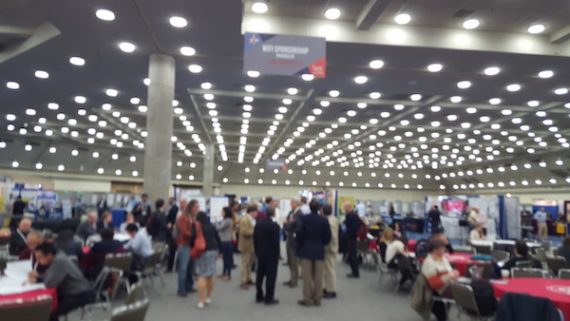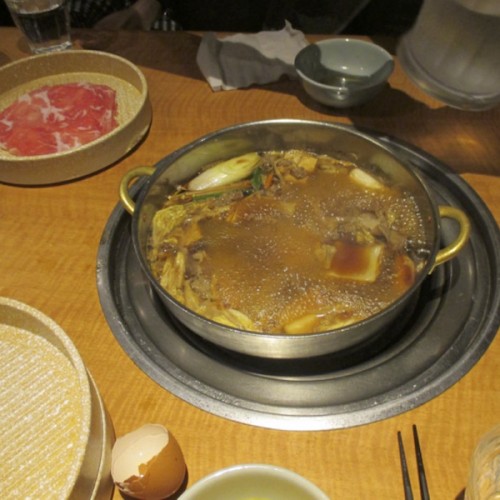The following post is by Melissa Haller ’16. Haller used part of her AMS grant to study the effect of nuclear plant closures on the small, rural communities of Haddam, Connecticut and Wiscasset, Maine.
Most people are very aware of the Fukushima nuclear disaster that occurred in 2011. The worst nuclear accident since Chernobyl, Fukushima contaminated thousands of square miles of Japan’s land mass, and forced the eviction of more than 100,000 people from their homes. In the wake of this disastrous event, the fate of nuclear power as a source of energy production has come into question. Do the benefits of nuclear power production outweigh the potential costs? Japan shut down its nuclear reactors for a number of years after Fukushima, and Germany even elected to close all nuclear reactors after the eruption of a vehement anti-nuclear movement in 2011. While closing and decommissioning nuclear reactors may seem like a practical choice given the clear risks that nuclear plants pose, there are two sides to every story. In the United States, not only does nuclear power account for more than 20% of total electricity production, but nuclear power plants themselves tend to make up a large portion of tax revenue, income, and employment for nuclear host communities. My research aims to investigate the impacts of decommissioning on the communities that depend on nuclear power, and I travelled to two former nuclear host communities over spring break to do so.
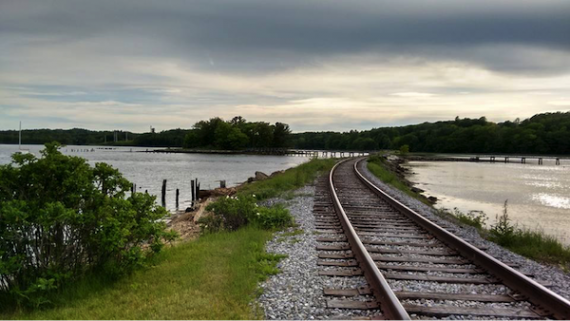
Railroad tracks in Wiscasset, Maine
Interviewing is a lot more difficult than it sounds. For this project, I wasn’t just trying to answer a few questions about the logistics of nuclear power; I wanted to speak with people about their stories, experiences, ideas, and opinions about living in a former nuclear host community, and the nuances and complexities of everyday life before and after decommissioning. Finding people willing to engage in these conversations is challenging, particularly if you are a newcomer or outsider to their community. Luckily for me, I had already spent a month this summer in the communities where I was conducting interviews, and I was able to reach out to former contacts to arrange discussions. We met in familiar spaces, often local coffee shops and restaurants, in offices and places of work, and in living rooms and kitchen tables. Wary of my own positionality as a researcher, the purpose of this trip was to make sure that my work accurately reflected their own voices and experiences. I hope that my work can be meaningful both to them and to other nuclear host communities, and this follow-up trip had an important part to play in furthering that goal.
My research centers around the communities of Haddam, Connecticut and Wiscasset, Maine. Neither community is what you might expect from a former nuclear host community: both are sleepy New England towns, complete with grand, historic properties and waterfront views. Haddam is small bedroom community along the Connecticut River, with easy access to New Haven, Harford, and nearby Middletown. Local people commute to nearby cities for work, and choose to live in Haddam for its quiet lifestyle and excellent school system. Wiscasset is a smaller village along the Sheepscot River, in the Boothbay Harbor region of Maine. Although it is much further from larger cities like Portland, many residents work in nearby Brunswick and Bath. Both communities are small, relatively rural, and reliant on tourism, small businesses, and industry in nearby cities for their economic survival. There is little evidence that a nuclear plant ever existed in either community, unless you drive out to the sites where the nuclear plants themselves once stood, which are now almost vacant, with the exception of concrete cylinders that house what remains of each plant’s nuclear waste. However, speaking with residents reveals that a nuclear legacy remains in each community, despite the twenty years that have passed since each plant has been closed. The presence of a nuclear facility facilitated growth and decline in each community, and local people have an important story to tell about their experiences with decommissioning.
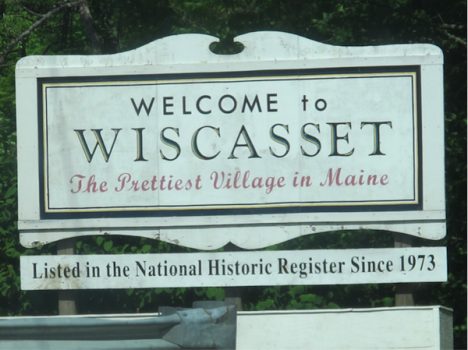
Regardless of these similarities, both communities experienced nuclear decommissioning very differently. Wiscasset spent more money on services and infrastructure while the Maine Yankee Nuclear Plant was in operation, and the plant played a much more important role in community life. After closure, former nuclear workers moved away to find employment, the local school population plummeted, and the town lost 96% of its existing tax base. The transition process in Wiscasset was much rockier than in Haddam, and local people are still feeling the effects of Maine Yankee’s departure today. Haddam, on the other hand, used the taxes it collected from the nuclear plant much more frugally: the town kept taxes low, but spent its budget modestly. After closure, local people found employment in nearby cities and continued to live in Haddam. Haddam historically has had a higher standard of living than Wiscasset, and local people were more than willing to pay higher tax rates in order to remain in their quiet bedroom community. In this sense, the first lesson I learned from my research trip was that communities can seem very similar, but respond to and experience nuclear decommissioning in very different and diverse ways.
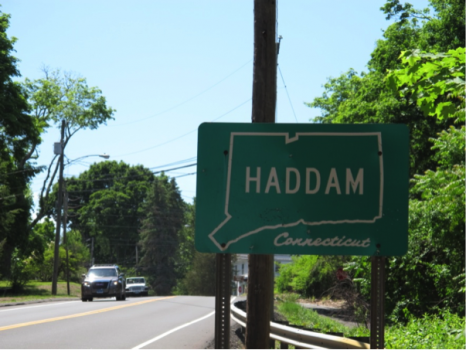
On the road to Haddam, Connecticut!
Secondly, I learned the importance of follow-up work. I hadn’t gotten my story quite right the first time, and returning to each community helped me to straighten out what I had missed. For example, in Haddam, I had believed that community organizations, local politics, and social capital were an important part of Haddam’s resilience. I quickly learned that I had over-emphasized that aspect of community life, particularly because I had met with so many civically-minded residents (politicians, members of local government, leaders of local organizations, etc.) during my first visit. I discovered that the real Haddam could not be neatly explained as a town with strong community ties: there is as much disengagement as engagement in the community, and local people are divided across either side of the Connecticut River. People are united not by some ideal vision of “Haddam,” but by their love for the community, its quiet, idyllic setting, and its complex and divisive character. I could not have recognized this aspect of Haddam’s community without following up on my initial work, and I am sure that I am still missing important parts of the story. I am not trying to perfectly understand and describe every aspect of these towns, but rather, to represent them as best I can, given my limited time and resources. I hope that I have done that successfully.
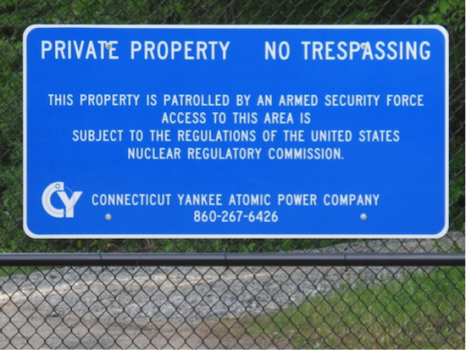
The former site of the Connecticut Yankee Nuclear Plant in Haddam, Connecticut
Overall, this research trip was incredibly successful. Not only will this follow-up work help me to write a more accurate and meaningful paper for my geography honors thesis, but it contributed valuable insight to my understanding of nuclear decommissioning in each community, and I hope that it will help me to better tell the stories of community members as I move forward with my project. As more communities in the United States and abroad experience nuclear decommissioning, the stories of Haddam and Wiscasset are becoming more and more important to tell, and I hope that other communities will find these insights and ideas valuable for their own future planning. Furthermore, this work has helped me to explore my own interests in community and regional economic development, and has helped me to gain important tools and perspectives that I will take with me as I prepare to pursue my PhD in geography at UCLA next fall. This trip was an incredible and valuable experience, one that will continually shape my research and my academic career for years to come.




